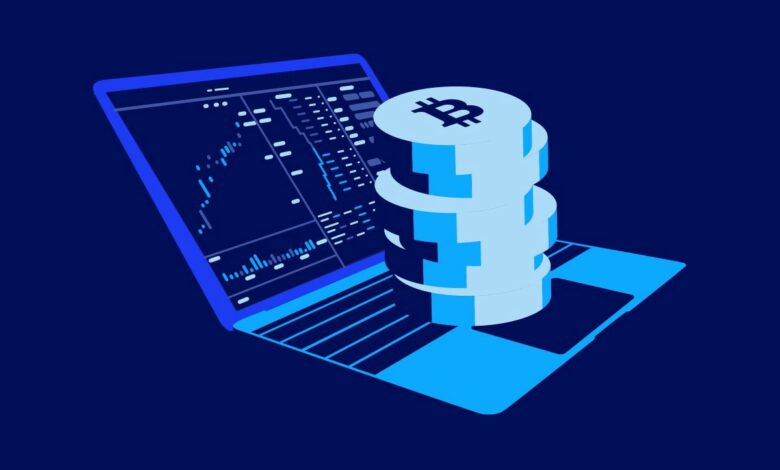
Automated trading bots have grown more popular among traders as a consequence of the crypto market’s volatility, since they enable them to maintain complete control over their trading at all times. The bot does not rest, while the trader does.
A properly configured BTC trading bot enables transactions to be performed quicker and more effectively than a trader could manually. The rise in popularity of cryptocurrencies has led to a significant growth in the number of bitcoin trading bots accessible, either for free via open-source platforms or for a charge.
The automated arbitrage bot is one of the most common kinds. Basically, it is software that compares prices across exchanges and trades to profit from price differences. Bots that can move quickly enough may defeat exchanges that are slow to update their values, since the price of a cryptocurrency varies considerably from exchange to exchange.
Automated Trading bots like those supplied by Bitsgap utilize past price data enabling them to backtest trading strategies and run real-time check-ups using the demo mode, allowing investors not to engage in trades blindly. The trading platform can also be adjusted to make trades in response to certain indications like price or trading volume.
Automated Trading Bot Strategies: What Are They and How Do They Work?

In the crypto market, which is much less mature than other financial markets, the technology has not lagged behind in terms of providing a trading bot service allowing investors to access a wide range of trading strategies.
Arbitrage
Buying assets in one market and then selling them in another for a higher price, making a profit on the difference, was one of the most common tactics employed by traders in the early days of cryptocurrency trading.
There are often significant price differences across exchanges, which allow arbitrage gains to be earned.
Although the gap between exchanges has shrunk significantly in recent years, they do occur from time to time, and automated trading bots may help users take advantage of these differences.
Arbitrage may also be used by traders who want to include futures contracts into their trading strategies by taking advantage of any differences that exist between a futures contract and its underlying asset, by evaluating futures contracts sold on a variety of exchanges.
Market Making

Investors may also utilize the market-creating technique with the help of trading bots. This approach aims to “capture the gap between the purchase and sell price.” To do it, it provides “continuous buy and sell prices on a range of spot digital currencies and digital currency derivatives contracts.”
Making both buy and sell limit orders near the current market place is required to carry out market making techniques. As prices change, the trading bot will place limit orders automatically and repeatedly in order to benefit from the spread.
Although this approach may be lucrative at times, the strong rivalry around it may make it unprofitable, particularly in low liquidity situations.
How Effective Are Trading Bots?
Automated Trading bots operate by responding to market conditions. They collect the information they need in order to execute a transaction based on the trading platform’s analysis.
With bitcoin, however, the trading platform only provides half the picture, with numerous spikes and falls depending on other sources that the bot cannot analyze.
As previously mentioned, the gap between the exchanges has narrowed considerably, implying that possibilities for inter-exchange arbitrage are significantly reduced compared to prior years.
As a starting point for market analysis, many automated trading bots employ what is known as an exponential moving average (EMA). Market prices are tracked using exponential moving averages (EMAs) over a specified time period. Thus, bots may be programmed to respond to changes in that price, such as when it crosses specific thresholds.
Traders can design their criteria to match their risk appetites by programming the bots. However, one of the disadvantages of EMA is that it is based on previous performance, which, as many traders know, is not predictive of future performance, particularly in the volatile cryptocurrency sector.
![6 of The Best Crypto Trading Bots Strategies [Updated List] - Blockgeeks](https://blockgeeks.com/wp-content/uploads/2020/03/Bitsgap-Trading-Bots-Eng.png)
As a result, the issue of whether automated trading bots function is complex, with the problem response being that they do, but not always for everyone. Among other platforms for automated trading, Bitsgap is the one that really stands out. Thanks to its intuitive interface and flexibility, any investor can easily adjust automated bots’ performance and risk to reward ratio.
Trading bots have a number of benefits, including continuous market involvement and the not-insignificant benefit of eliminating emotion from the equation. On top of that, Bitsgap has a number of incorporated risk management tools that prevent trading robots to wind up a series of bad market trading choices if it was previously programmed to use a non-profitable trading strategy.
Consider Using a Bot for These Reasons
Cryptocurrencies are difficult to evaluate in the same way that cash or stocks do. The majority of people connect stocks with capital gains, yet many of the greatest companies also pay dividends.
In the crypto market, there isn’t really an analogy for this, unless crypto owners lease out their assets to generate money.
Passive income is very significant in terms of investing. Users can’t expect that asset prices would increase year over year, as it was last year. One justification for keeping stocks during a bear market is that they will continue to generate dividends, which may be reinvested in the business when stock prices are low.

From a financial perspective, cryptocurrencies are more akin to a commodity than a business, which poses a dilemma for investors. In a bear market, there is no incentive to keep onto a commodity since it does not provide any sort of return other than price appreciation.
Automated Trading bots may help traders ensure that they are constantly engaging with the market, even if they are unable to do so personally. They may help to alleviate some of the tension that are common in financial trading markets, particularly the bitcoin market.
Trading bots may also not be for you if you are not a skilled programmer or are unfamiliar with the development of financial strategies. A trading bot, on the other hand, may be a valuable instrument in monitoring and profiting from the bitcoin market provided you have the necessary knowledge and skills to overcome these hurdles.




